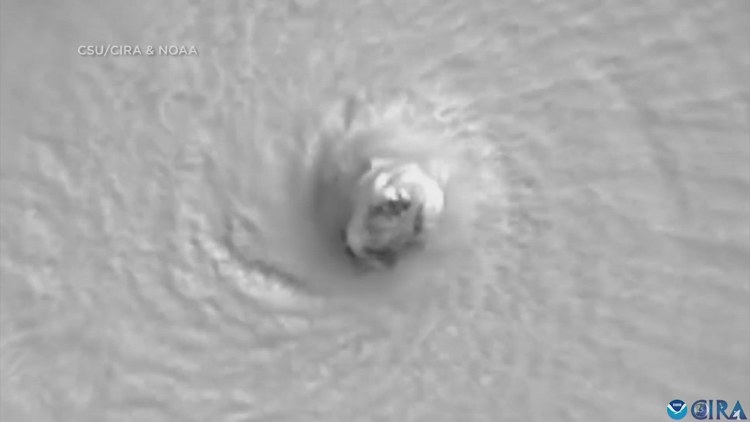TAMPA, Fla. — Hurricane Milton is expected to bring deadly levels of storm surge at 10 to 15 feet and between 5 to 12 inches of rain to Tampa as it nears landfall late Wednesday night into Thursday morning, but numerous areas south of the city may see even worse impacts.
Local emergency officials are preparing for widespread power outages and damage once the storm hits, but which areas see the most severe damage depends on where the storm's "dirty side" is located.
Meteorologists describe the "dirty side" of a hurricane or tropical storm as the storm's right side, based on the direction it is moving. If the storm system is moving to the north, the dirty side is usually to the right or east side of the system. If the storm is moving west, the dirty side would be the top or north side.
It's described as the "dirty side" because it's where the most concerning weather in the storm occurs. It's the area most likely to experience storm surge, extreme wind and heavier rain bands that can cause flooding and tornadoes.
The main cause is winds that spin around the hurricane counterclockwise, meaning wind on the dirty side blows onshore and pushes water onto land. The faster the wind speed and forward motion of the storm, the higher the storm surge will be.
The other side of the storm will blow winds offshore. While that can still bring wind damage, the wind will blow the water offshore, causing minimal storm surge and tornado threat.
"Tropical cyclones tend to be symmetrical. This means the winds should be the same in all quadrants at a given distance from the center," the National Oceanic and Atmospheric Association said. "However, most hurricanes are moving, and the storm’s motion will be added to or subtracted from those winds creating an asymmetric structure. The side where the motion is added to the winds is called the 'dirty side' as the weather is rougher and more dangerous there."
Winds on the other side of the storm are slower because the forward velocity slows them down.
“For example, a hurricane with 90 mph winds moving at 10 mph would have a 100 mph wind speed on the right (forward-moving) side and 80 mph on the side with the backward motion,” NOAA’s website said.
Weather forecasts take this combination of wind and movement speed into account when estimating a storm's maximum wind speeds.
10 Tampa Bay is your Hurricane Headquarters and we have resources and tips to keep you and your family safe and prepared throughout the hurricane season. Download our free 10 Tampa Bay app, head to our Hurricane Headquarters page, and stay up-to-date on our free 24/7 streaming app, 10 Tampa Bay+.
Previous 10 Tampa Bay reporting contributed to this article.



